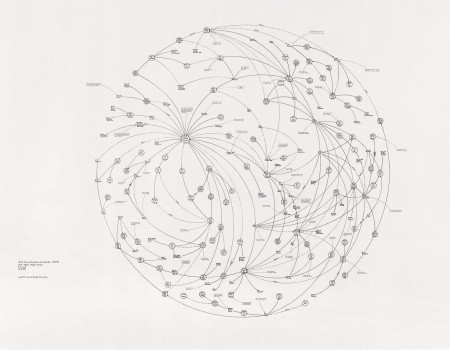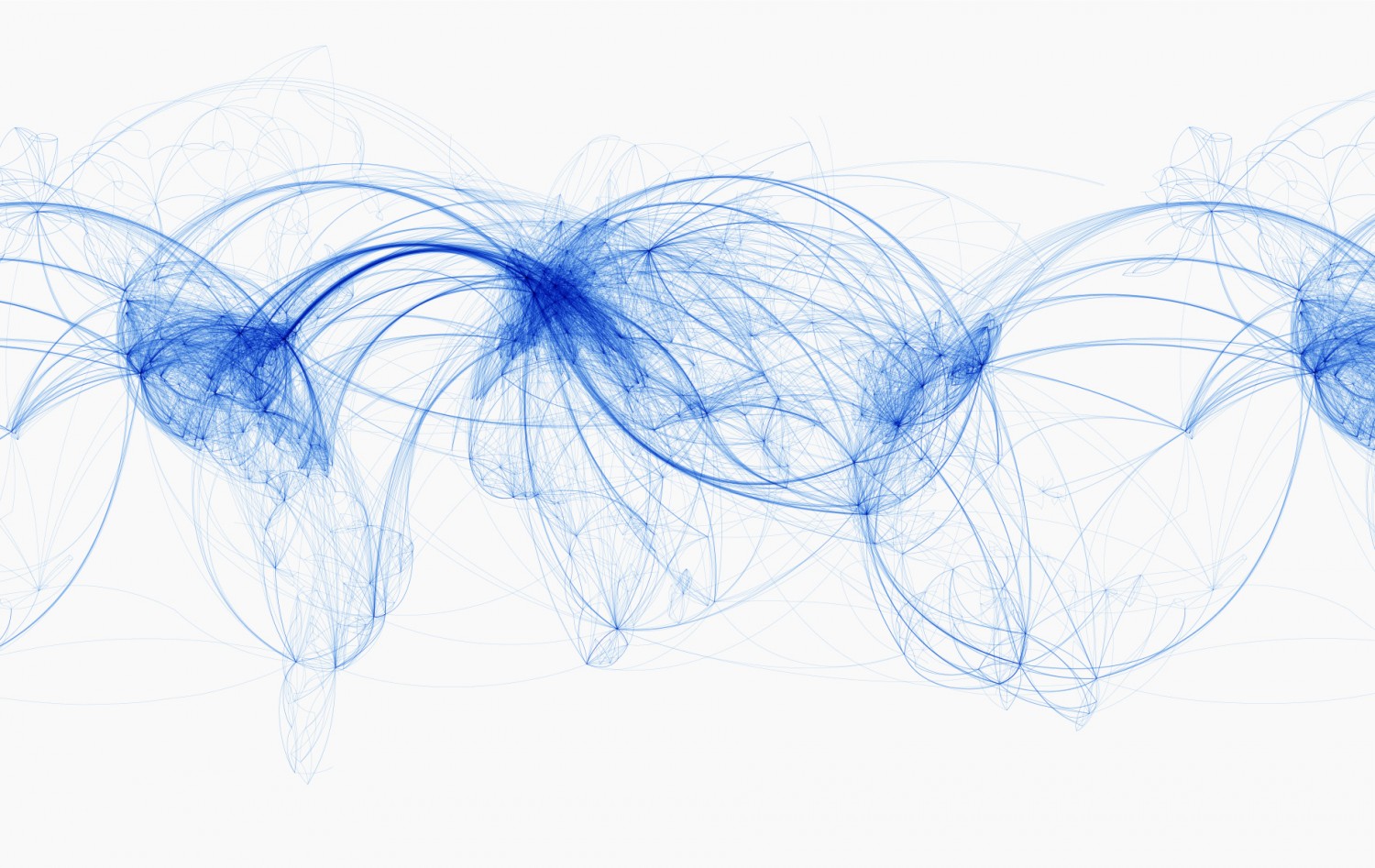I
When it refers to the global, compartmentalization will be strongly discouraged. Information lies in a continuum and any attempt to categorize portions of its flux into discrete entities will lead to reductionistic views of the global. Fascism is a form of reductionism, which appears to be unwilling to navigate through the inevitable complexity of the multiverse; fascism cannot or will not adapt. The only true alternative to fascism is the acknowledgement of the global and its cause.
II
The cause of the global is exceedingly demanding, for our ability to experience phenomenologically is rather limited. The recent successes of racism, sexism, and other forms of discrimination may be explained as consequences of the prevailing fundamentalism of immediacy, which counteracts the highly mediated experience of the present world. A paradox is thus crystal clear: mediation and immediacy are falsely perceived as antithetical units—they coexist in the continuum.
N.B. The fundamentalism of immediacy is also common in a number of leftist circles (e.g., horizontalism and the glorification of direct democracy as the ultimate emancipatory project). It is not a form of apoliticism only.
III
In spite of their morphological similarity, globalization and the global are opposed to each other. Globalization does operate within the continuum but is unwilling to consent to its logic. Along these lines, globalization segregates humans in order to sustain an ostentatious need for financial profit—it thrives on discreteness. Outsourced labor is a clear example of this praxis. Multinational corporations advertise products by displaying multiethnic situations: blacks, browns, whites, and yellows are portrayed under the power of a unifying brand. Nevertheless, far from dismantling race-based boundaries, corporations are responsible for reinforcing the intertwinement of racism and poverty in the Global South. Those whose skins are not white are still forced to work for those others (white or not) who can afford to pay for their labor and especially the exorbitant surplus value. This is the current form of colonization: corporate imperialism that takes advantage of and promotes segregation based on essentialist notions of identity.
IV
According to existing human standards, the global may be a phenomenological impossibility—we are restricted by our bodies. However, it is crucial to strive for the absolute completion of the experience of the global, even if in the process we have to entirely reevaluate what it means to be human. That being said, it is unlikely that the need to redefine such an ontology will materialize in radical ways. The human is a human the day she is born, but she is also human when planting a tree or using a cellphone. And so, she will still be human the day she is not restricted by her body.
V
Socially productive art may be located near the margins of the continuum: it may be nothing but a yet-to-be-categorizable part of the flux. By virtue of this principle, it functions as the contained negative of the global. Socially productive art is not the global, but it suggests a powerful illusion of the totality of the global; herein lies its latent force for emancipation as well as potentially imminent failure.
VI
Socially productive art may appear to be in conflict with autonomous creativity but it is not. Socially productive art is a necessary step toward the phenomenological experience of the global, whose portal tends to be locked up. As a result of its definite purpose, socially productive art must become the key to accessing the global, not as the mirage of a false locus of reality where possibilities may appear to be endless, but as a knowing force capable of operating the intricate mechanism that keeps the portal shut—full emancipation lies in the recognition of the oppressor. Once attained, autonomous creativity may even build upon the ontogenesis of the global, thus intensifying the significance of the conscious subject. After all, isn’t the multiverse the result of a creative act?
VII
We are ultimately trying to rise above the grayness of life under the influence of systemic values that repress autonomous creativity.
Produktionsmittel III and the Seven Propositions

Mark Lombardi, Oliver North, Lake Resources of Panama, and the Iran-Contra Operation, ca. 1984–86 (fourth version), 1999, 63 × 82? inches.
Produktionsmittel III [Means of Production III] is a 78-page book that can be read in the privacy of the reader’s mind or performed publicly as an experimental music theater piece. The work uses a wide variety of text-types, from literary forms to parametrical, graphic, and conventional music notation. Produktionsmittel III is the story of the dawn and collapse of five alien civilizations that coexist in the multiverse. Or, perhaps I should say that it is the story of the very multiverse, which randomly generates spaces for the existence of life forms—forms which, in some cases, evolve into sophisticated structured systems (i.e., civilizations). Since this is a story of space-time, it would not be very appealing to present it linearly. Instead, time is treated as a malleable substance that allows the reader/listener to experience reality as a fragmented construction whose totality must be tangentially inferred. In addition, reality is expressed in many of its scales: from the sounds produced by condensation inside of a prepared bass clarinet to the sonic representation of the formation of the stars.
The Seven Propositions for the Global were written after the completion of Produktionsmittel III and were used as program notes for its first public interpretation, which took place at the Ryan Opera Theater in Evanston, Illinois on May 17, 2016. The propositions are incomplete conclusions. These are thoughts that surfaced after having finished Produktionsmittel III, but they require further examination and growth. They represent both the final and the first—in that order—stages of a holistic thought process that permeates a variety of fields of knowledge. One hopes that, while the propositions emerged from an artistically creative activity, they may be repurposed into other contexts, perhaps far from their ontological origin.
[flipbook-popup id=”produktionsmittel_iii”]
Click here to view Produktionsmittel III.[/flipbook-popup]
